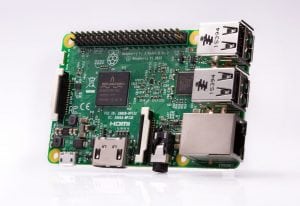
Agriculture
June 25, 2024
Raspberry Pi 3 Model B
Read SolutionImplemented by
Raspberry Pi Foundation
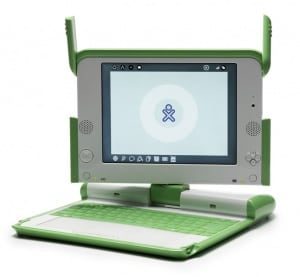
Updated on June 23, 2024
·Created on September 8, 2017
Robust, easy-to-repair laptop
The XO laptop is a low-cost laptop computer that aims to, given its cost effective design, provide a laptop to children in developing countries around the world, to give them access to knowledge and new technologies. The XO was developed by Nicholas Negroponte, a co-founder of MIT’s Media Lab, and designed by Yves Behar’s Fuseproject company. The laptop is manufactured by Quanta Computer and developed by One Laptop per Child (OLPC).
Target SDGs
SDG 9: Industry, Innovation and Infrastructure
SDG 4: Quality Education
Market Suggested Retail Price
$229.00
Target Users (Target Impact Group)
Community
Distributors / Implementing Organizations
The laptops are sold to governments, NGOs and other donors. The largest national implementers include Uruguay, Peru, Argentina, Mexico, and Rwanda. Other significant projects have been started in Gaza, Afghanistan, Haiti, Ethiopia, and Mongolia.
Regions
Worldwide
Manufacturing/Building Method
The XO laptop was designed collaboratively by experts from academia and industry to combine innovations in technology and learning. For the product designed were considered the need to withstand extreme environmental conditions such as high heat and humidity, and to support easy field repair by children and local language support.
Intellectural Property Type
Select Type
User Provision Model
OLPC works with governments, NGOs and other donors to implement the OLPC educational program in entire schools and communities. There is a series of different contact e-mails depending on the enquire and interest of the customer.
Distributions to Date Status
Roughly 2 million children and teachers in Latin America are currently part of an OLPC project, with another 500,000 in Africa and the rest of the world.
Input ports
Microphone input: Standard 3.5mm 3-pin audio mic jack; selectable 2V DC bias; selectable sensor-input mode (DC or AC coupled) USB: Two Type-A USB-2.0 connectors; up to 1A power supplied (total; through a single connector) Flash drive: MMC/SD Card slot.
Type of computer
Laptop computer.
Output ports
Headphone output: Standard 3.5mm 3-pin audio jack; HDMI: A micro-HDMI connector is provided, supporting video output.
Power source required (Y/N)
DC power: 6mm (1.65mm center pin) connector; 11 to 25 V input usable, –32 to 40 V input tolerated; power draw limited to 25 W.
Operating system and version
Fedora-based (Linux) with Sugar GUI.
Processing type (MHz)
Dual core ARM PJ4 processors, running at 1 GHz or 1.2 GHz
RAM (GB)
DRAM memory: 1 GB or 2 GB DDR3L SDRAM
GPU Acceleration (Y/N)
No.
Storage capacity (GB)
Mass storage: 4 Gibytes or 8 GiBytes of eMMC NAND Flash memory on motherboard – other storage size options also available.
Network technology available (Y/N)
Integrated IEEE 802.11/b/g (2.4 GHz) wireless networking interface.
Internet enabled? (Y/N)
Yes.
SMS enabled? (Y/N)
No.
Design Specifications
The XO Laptop is Linux-based, with a dual-mode display, one mode is full-color and transmissive, the second is black and white, reflective, and sunlight-readable at three times the resolution. The XO Laptop are available with up to a 1.2 GHz processor. It does not have a hard disk, but has two USB ports, a micro-HDMI port and a SD-card slot for expansion.
The laptops have wireless broadband that, among other things, allows them to work as an ad-hoc network: laptops can send data to their nearest neighbors, creating a local area network even if there are no routers nearby. The laptops are designed to be power efficient, enabling the use of innovative power systems (such as solar, human power, generators, wind or water power).
More detailed information on specifications can be found on the provider specs section from their web page.
Technical Support
Users and clients can contact provider for technical support over help@laptop.org. OLPC also offers a support strategy program and a wiki page for support.
Replacement Components
There are diverse channels proposed to access replacement components in the OLPC wiki page.
Lifecycle
OLPC organization estimates a useful life of up to 4 years for each Laptop.
Manufacturer Specified Performance Parameters
Unknown
Vetted Performance Status
The Impact of a One Laptop per Child Program on Learning: Evidence from Uruguay "results suggest that in the first two years of its implementation the program had no effects on math and reading scores. The zero effect could be explained by the fact that the program did not involve compulsory teacher training and that laptops in class are mainly used to search for information on the internet." A Short Case Study of the Impacts of the OLPC Project around the World: "the situation in six countries. In three of these countries the OLPC project was considered successful and in the other three countries the project did not necessarily live up to the expectations."
Safety
The XO Laptop is compliant with the European Union's RoHS Directive, containing no hazardous materials. Its LiFePO4 batteries contain no toxic heavy metals, plus it features enhanced battery management for an extended recharge-cycle lifetime.
Complementary Technical Systems
Diverse equipment can be connected to the laptop always that it is compatible with OS.
Academic Research and References
Shelia R. Cotten, Timothy M. Hale, Michael Howell Moroney, LaToya O’Neal & Casey Borch (2011) USING AFFORDABLE TECHNOLOGY TO DECREASE DIGITAL INEQUALITY, Information, Communication & Society, 14:4, 424-444, DOI: 10.1080/1369118X.2011.559266
Eden Medina, Ivan da Costa Marques, and Christina Holmes. Translating Magic: The Charisma of One Laptop per Child’s XO Laptop in Paraguay. (eds.), Beyond Imported Magic: Essays on Science, Technology, and Society in Latin America. MIT Press, 2014.
Kuo-Chuan (Martin) Yeh, Jonah P. Gregory, and Frank E. Ritter (2010): One Laptop per Child: Polishing Up the Xo Laptop User Experience. Ergonomics in Design, Vol 18, Issue 3, pp. 8 – 13
Kenneth L. Kraemer, Jason Dedrick, and Prakul Sharma. 2009. One laptop per child: vision vs. reality. Commun. ACM 52, 6 (June 2009), 66-73. DOI: https://doi.org/10.1145/1516046.1516063
Rawsthorn, Alice. 2011. “A Few Stumbles on the Road to Connectivity.” The New York Times, December 18, 2011. https://www.nytimes.com/2011/12/19/arts/design/a-few-stumbles-on-the-road-to-connectivity.html?pagewanted=all
Raspberry Pi Foundation. n.d. “Teach, Learn, and Make with The.” Raspberry Pi Foundation. Accessed June 23, 2024. https://www.raspberrypi.org/
“Arduino – Home.” n.d. Arduino.Cc. Accessed June 23, 2024. https://www.arduino.cc/
“Tinker Board?AIoT & Industrial Solution?.” n.d. ASUS USA. Accessed June 23, 2024. https://www.asus.com/us/networking-iot-servers/aiot-industrial-solutions/all-series/tinker-board/
“Goal 9.” n.d. Sdgs.Un.Org. Accessed June 23, 2024. https://sdgs.un.org/goals/goal9
“OLPC:Contact Us.” n.d. Laptop.Org. Accessed June 23, 2024. https://wiki.laptop.org/go/OLPC:Contact_us
“Spare Parts.” n.d. Laptop.Org. Accessed June 23, 2024. https://wiki.laptop.org/go/Spare_parts
Melo Alina Machado Alfonso Miranda, Gioia de. n.d. “The Impact of a One Laptop per Child Program on Learning: Evidence from Uruguay.” Iza.Org. Accessed June 23, 2024. https://docs.iza.org/dp8489.pdf
Coomar, Sonika, and Ilia Ryzhov. n.d. “A Short Case Study of the Impacts of the OLPC Project around the World.” Uzh.Ch. Accessed June 23, 2024. https://files.ifi.uzh.ch/hilty/t/examples/IuN/Case_Study_One_Laptop_per_Child_(OLPC)_Project_Coomar_Ryzhov.pdf
Compliance with regulations
Yes. The XO Laptop has been certified to meet the following regulations and safety requirements: IEC 60950-1, EN 60950-1, CSA/UL 60950-1, UL 1310, UL 498; and ASTM F 963 (safe for use by children); The external power adapter and battery comply with IEC, EN, and CSA/UL 60950-1; IE 61000-4-4 and 61000-4-5 (adapter only: transient, burst, and surge immunity); and UL 1642 and 2054 (battery only); The laptop meets US and EU EMI/EMC requirements and EU RoHS requirements.
Evaluation methods
Academic research
Other Information
None.

Agriculture
June 25, 2024
Implemented by
Raspberry Pi Foundation
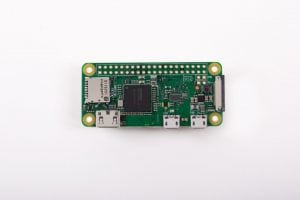
Agriculture
June 25, 2024
Implemented by
Raspberry Pi Foundation
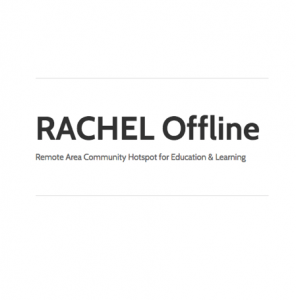
Agriculture
June 16, 2024
Implemented by
Hackers for Charity
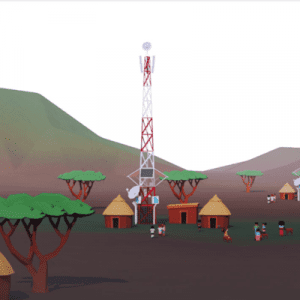
Agriculture
June 24, 2024
Implemented by
Bluetown Corporation
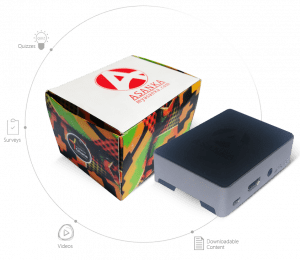
Agriculture
June 24, 2024
Implemented by
TECHAiDE

Agriculture
June 26, 2024
Implemented by
CGNet Swara

Agriculture
June 16, 2024
Implemented by
Emmanuel Engelhart
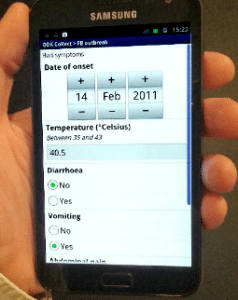
Agriculture
June 4, 2024
Implemented by
University of Washington

Agriculture
June 5, 2024
Implemented by
Simprints

Agriculture
August 29, 2024
Implemented by
Weifang Public Machinery Co., Ltd.
Have thoughts on how we can improve?
Give Us Feedback